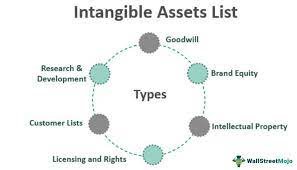Today, partnerships are a crucial aspect any organization - business, academic, government and nonprofits. The success of a partnership is often determined by the resources that each partner brings to the table. However, the traditional way of thinking about resources in a partnership is that they are simply assets or contributions to be shared and utilized and that it’s the financial resources brought or donated that matter the most. This perspective does not fully capture the potential of resources in a partnership.
A strength-based approach to partnership contributions in a partnership suggests that each partner's unique resources can be leveraged to create a synergistic effect, where the whole is greater than the sum of its parts. This approach shifts the focus from simply sharing resources or seeing some resources as more valuable than others, to actively leveraging them in a way that maximizes the potential of the partnership.
One of the key benefits of this approach is that it allows for a more dynamic and adaptive partnership. By focusing on the strengths and resources of each partner, the partnership can adapt and evolve as the needs and goals of the partnership change. This flexibility is particularly important in today's fast-paced business environment, where the ability to adapt and respond to change is a key differentiator.
Viewing resources from a strength-based lens allows for a more equitable distribution of resources. In traditional partnerships, resources are often shared based on a set of predetermined rules or agreements. However, this approach can lead to imbalances and inequality, as some partners may be better positioned to leverage certain resources. A strength-based approach allows each partner to contribute their unique resources and skills, resulting in a more balanced distribution of resources.
It is important to note that the strength-based approach does not negate the importance of shared resources. In fact, shared resources can be a powerful tool in a strength-based approach, as they allow partners to pool their resources and achieve a level of scale and impact that would be difficult to achieve alone.
Taking this strength-based approach helps partners to recognize that resources are not just financial or tangible assets, but also include intangible assets such as knowledge, expertise, and networks. These intangible assets can be just as valuable, if not more so, in a strength-based approach.
For example, one partner may bring financial resources to the partnership, while the other partner brings expertise in a specific area. By leveraging these resources in a way that complements each other, the partnership can achieve a level of success that would be difficult to achieve alone.
Viewing partners' resources as strengths versus just assets can foster a positive and supportive environment. Partners who feel valued and appreciated are more likely to be engaged and invested in the partnership. This can lead to increased collaboration and cooperation, which can lead to better outcomes for the whole partnership
This approach can also lead to more efficient and effective problem-solving. When partners can leverage each other's strengths and resources, they can more easily identify and address challenges and obstacles. This can lead to more creative and innovative solutions, which can ultimately lead to greater success for the partnership.
Partners who understand and appreciate each other's strengths are more likely to communicate effectively and understand each other's perspectives. This can lead to fewer misunderstandings and conflicts, and a more positive and productive partnership overall.
The traditional way of thinking about resources in a partnership is that they are simply assets to be shared and utilized. A strength-based approach to resources in a partnership suggests that each partner's unique resources can be leveraged to create a synergistic effect, where the whole is greater than the sum of its parts. By recognizing the potential of each partner's unique resources and skills, partnerships can become more dynamic, adaptive, and equitable, resulting in greater success for all involved. This simple mindset shift from seeing resources as an asset to seeing them as a partner strength can make a huge difference in how the partners work together and ultimately their success.





